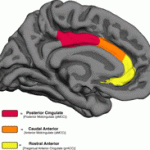Rats Recognize Expressions Of Pain
April 1, 2015 | by Justine Alford
Much like humans, rats can show facial expressions of pain, screwing up their little faces when something is hurting them. Their expressions are actually so telling that one group of scientists even developed a grimace scale that can be used to deduce how much pain a rat is in. While this indicates that rodents are capable of expressing emotions, what remained hazy was whether these are merely products of some physiological reaction, or whether they can be used to communicate information to other rats.
Now, a new study has finally shed light on this area, suggesting that rats are able tell if a fellow rodent is in pain and can actually use this information to change their behavior and thus avoid potentially dangerous situations. The findings have been published in Royal Society Open Science.
Darwin famously asserted that non-human animals are capable of expressing emotions with both their body and face. Of course, he was correct, and it’s well documented that various primate species can both show facial expressions and discriminate between them. But it’s not just our close relatives that are capable of expressing emotional states; rodents can also exhibit facial expressions of various emotional states, such as pain or whether they enjoy the taste of something.
To find out more, scientists at NTT Communication Science Laboratories designed a study that aimed to find out whether rats could discern between different expressions and react to them. For their investigation, the researchers started off by photographing rats with either a neutral or pained expression, which was induced by a small foot shock. When rats are in pain, they squeeze their eyes, flatten their cheeks and fold their ears. They then doctored some of the photos, blurring out either their faces, bodies or both. Although this may seem artificial, by using photos rather than actual animals, the researchers eliminated other possible cues, such as vocalizations or smells.
Rats were then placed in compartmented boxes in which a plain central zone connected two areas, one containing pictures of rats in pain, and the other displaying images of rats with neutral expressions. The scientists allowed the rats to explore and measured how much time they spent in each area. Unsurprisingly, they found that the rats spent significantly more time in the area displaying neutral facial expressions and avoided the box containing images of pained expressions.
Interestingly, they also found that the rats were only able to recognize pained expressions when both the face and body were visible as they didn’t avoid areas containing pain images in which the body was blurred out. This indicates that the body also conveys important information about the animal’s emotional state, much like in humans.
These results suggest not only that rodents are able to recognize pain expressions in members of the same species, but they can treat these as warning signals to adjust their behavior and thus avoid potentially dangerous situations. The scientists therefore conclude that emotional expressions in rats are more than just meaningless reactions, and instead likely have a communicative function.
http://www.iflscience.com/plants-and-animals/rats-recognize-pain-expressions
This fantastic performance, he said was the result of 15 minutes of brain training per day. I have just had to look up the name of my opponent – but she no doubt remembers mine to this very day – and that may also be a sign of which one of us is regularly doing our little brain-training exercises.
 They want to replace traditional brawn and metal with unconventional materials to create cheaper and more effective soft machines.
They want to replace traditional brawn and metal with unconventional materials to create cheaper and more effective soft machines. Scientists gave navigational skills to blind rats by wiring them with a compass that sends electric signals to their brain when they’re facing north or south.
Scientists gave navigational skills to blind rats by wiring them with a compass that sends electric signals to their brain when they’re facing north or south. Unpowered mechanical design lowers the energetic costs of walking.
Unpowered mechanical design lowers the energetic costs of walking. Monkeys use a distinct set of neurons to predict whether a fellow primate is likely to cooperate for a common good. Changes in these newly identified ‘other-predictive’ neurons may be relevant in social behavioural disorders such as autism, the authors say.
Monkeys use a distinct set of neurons to predict whether a fellow primate is likely to cooperate for a common good. Changes in these newly identified ‘other-predictive’ neurons may be relevant in social behavioural disorders such as autism, the authors say. The proliferation of 3-D printers has had an unexpected benefit: The devices, it turns out, are perfect for creating cheap prosthetics. Surprising numbers of children need them: One in 1,000 infants is born with missing fingers, and others lose fingers and hands to injury.
The proliferation of 3-D printers has had an unexpected benefit: The devices, it turns out, are perfect for creating cheap prosthetics. Surprising numbers of children need them: One in 1,000 infants is born with missing fingers, and others lose fingers and hands to injury. “SuperAgers” have a thicker anterior cingulate cortex that may represent a biological signature of high memory capacity in aging.
“SuperAgers” have a thicker anterior cingulate cortex that may represent a biological signature of high memory capacity in aging. Research published online in the
Research published online in the  Course description
Course description